Key figure in Freedom Convoy argues police, city failed residents at trial
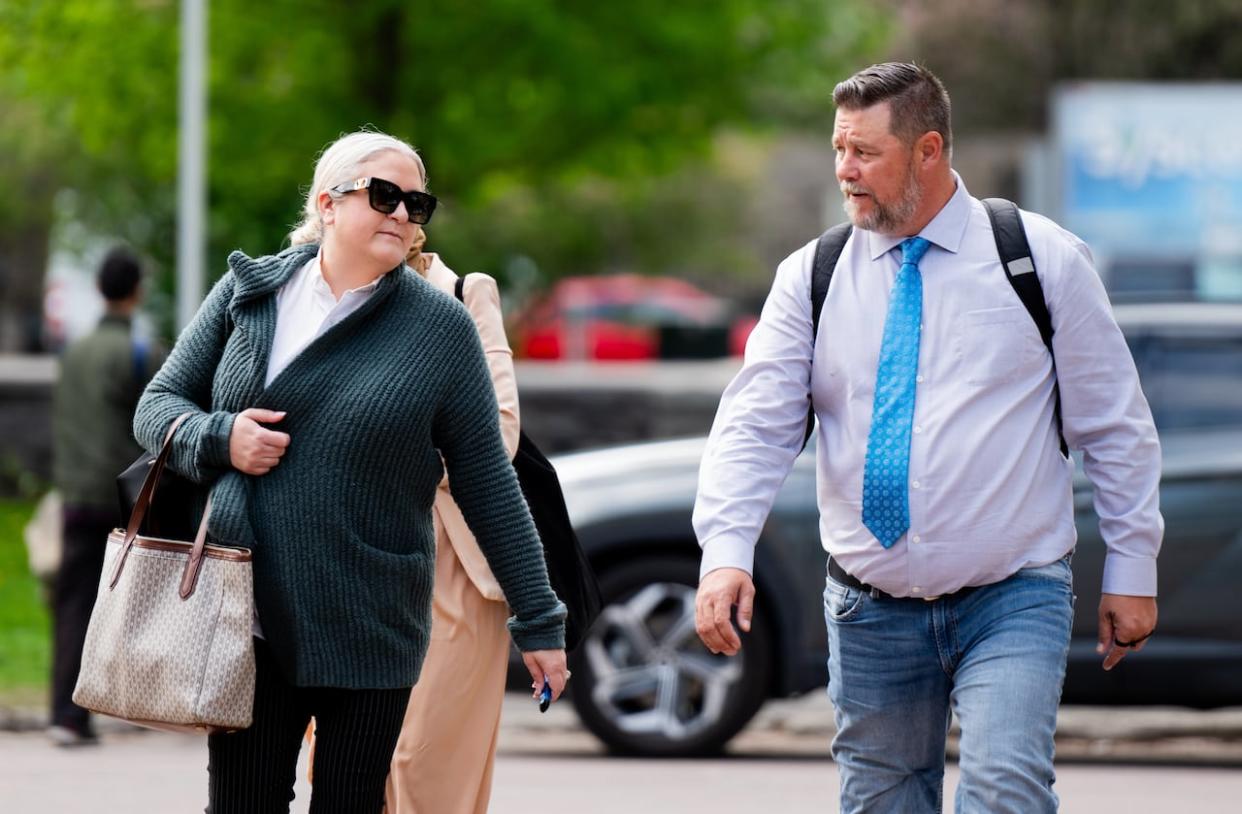
An Ottawa police officer responsible for engaging with protesters attending what became the 2022 Freedom Convoy described crowds that were at times "hostile" and "confrontational" during the criminal trial of one of the protest's key figures, Pat King.
But the officer told the court he didn't know what the Ottawa Police Service's "end game" was until protesters were entrenched — and only a few days before law enforcement started moving to arrest supporters of the convoy in a major police action on Feb.18, 2022.
King pleaded not guilty to mischief, intimidation and seven other charges in relation to his role in the protests that gridlocked large swaths of the nation's capital.
During the second week of trial, acting Sgt. Jordan Blonde said a team of police liaison officers acting as a conduit between authorities and protesters tried using a "measured approach" to warn protesters to go.
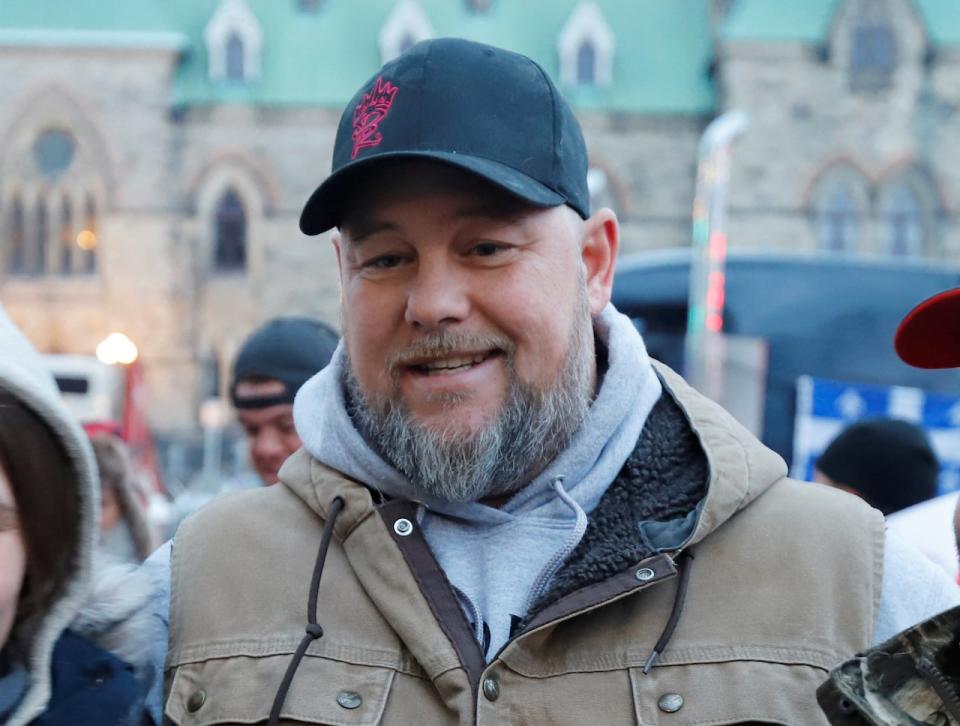
Pat King, one of the organizers of the protest, poses for photos in front of Parliament Hill on Feb. 16, 2022. (Patrick Doyle/Reuters)
Police unable to enforce laws
His team was given messaging to do this from senior officers beginning on Feb. 15, the same day Ottawa Police Service former chief Peter Sloly resigned.
Blonde told the court prior to that date, police officers didn't have any consequences to detail to protesters who had chosen to stay in the city — despite state of emergency declarations by the city, province and, eventually, on Feb. 14, the use of the Emergencies Act by the federal government.
He said there was a "myriad of laws being broken" by people drinking alcohol openly, blocking streets, having open fires and other illegal activities but admitted to not seeing any tickets issued, arrests made or trucks towed until after the police operation began on Feb. 18.
"A great number of things couldn't be enforced. It was a safety issue," he said.
Blonde described how a "great number of people didn't want" to receive notices being distributed by him and other officers between Feb. 15 to 17 telling protesters to leave.
During one delivery of flyers with a message from police, on Feb. 16, he said the "crowd was quite agitated and upset," "very hostile," and "quite confrontational."
He said generally the crowds were not acting this way, but the delivering of that police messaging caused hostility.
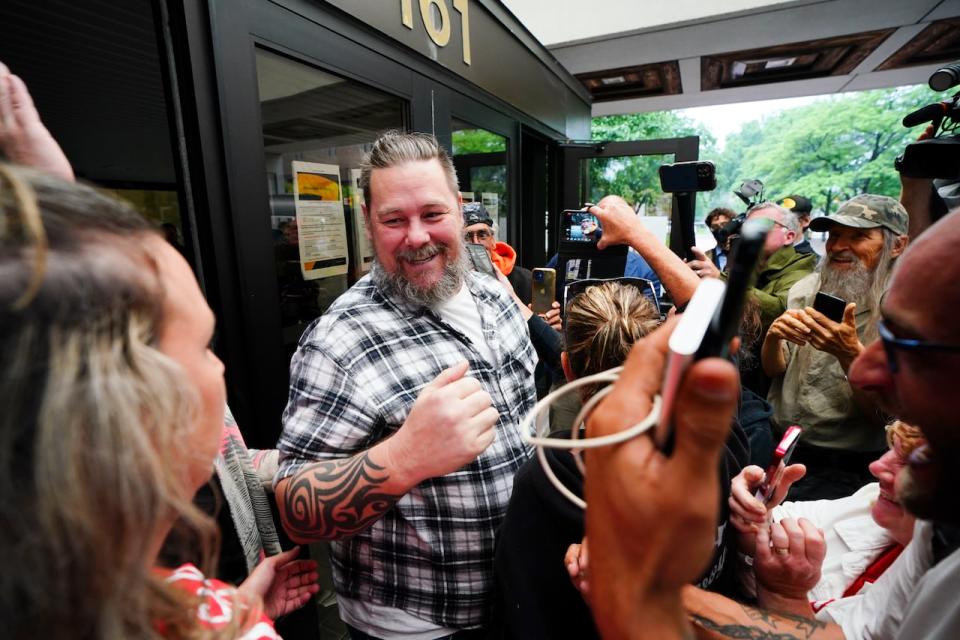
King leaves the Ottawa Courthouse July 18, 2022, after being granted bail. (Sean Kilpatrick/The Canadian Press)
On Feb. 17, police again tried delivering a warning to protesters, but they were unable to continue after being surrounded by people screaming and yelling near the intersection of Wellington Avenue and Metcalfe Street.
Blonde said his team of police liaison officers left the area because they just "didn't feel safe," and it was one of only a few times in his experience as an officer where he felt his safety was at risk.
He said several protesters were indicating they weren't leaving, and had resolved to be arrested.
Blonde, who never interacted with King, agreed there were multiple convoys that had travelled to Ottawa to attend the protests.
He told the court he recognized there were several different groups and factions involved in the protests, but considered the broader protest as a whole to be part of the Freedom Convoy.
Crown arguing King used control, influence to break laws
Throughout its submissions, Crown prosecutors have used social media videos and other evidence to argue King should be found guilty when a judgment is delivered by Superior Court Justice Charles Hackland.
Crown prosecutors are arguing King was a leader of the protest and used his influence to counsel others to break the law.
They say he was directly involved in organizing a slow roll at the Ottawa airport and had encouraged others to take part in the crime of mischief, in part by telling them to continue honking their horns.
King tells supporters to "get to Ottawa" and to "honk those horns, let the heavens hear you" in a Feb. 8 video, one day after the a judge granted an injunction against the use of horns.
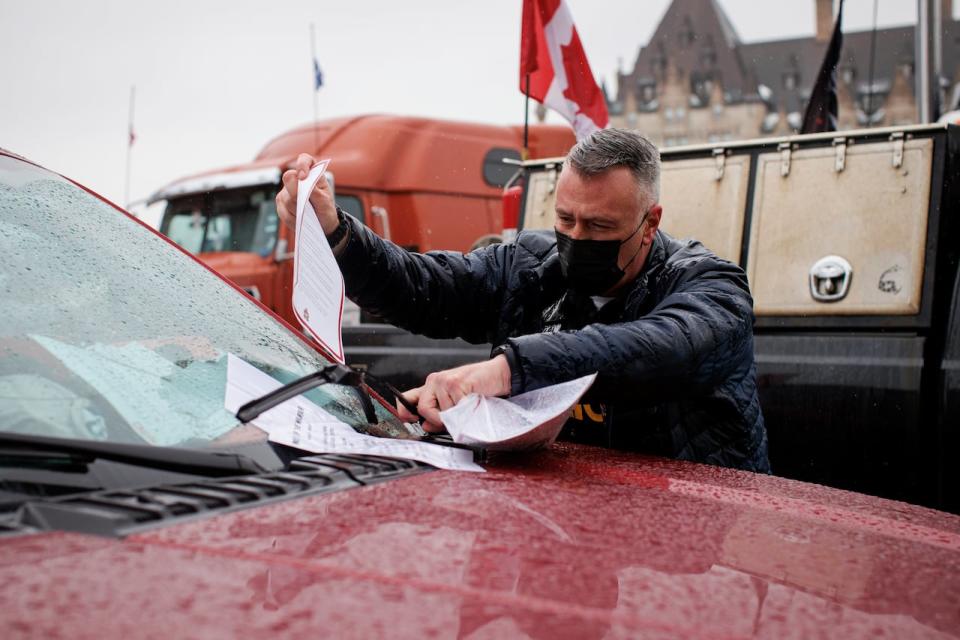
A police officer puts a flyer on the windshield of a vehicle in downtown Ottawa on Feb. 17, 2022. (Evan Mitsui/CBC)
Police directed protesters, failed residents
King's lawyer, Natasha Calvinho, entered as evidence detailed maps provided by Ottawa police to protesters on how to navigate the city's core to park in "staging areas" throughout it.
Shared with protesters travelling to the city prior to their late-January arrival, the map directed the trucks downtown and instructed them to keep emergency lanes open, prevent closed trailers from being parked on Wellington Street or near Parliament, and how many types of different vehicles could fit where in Ottawa's core.
Calvinho is trying to demonstrate King was not a leader of the Freedom Convoy and protesters, and residents, were failed by police and city officials in the midst of a legal protest.
She pointed to a plan, called off by police, to remove trucks from residential areas and closer to the downtown core prior to the police action commencing.
She also argued there was mixed messaging over whether people were able to leave with their vehicles on their own after police started enforcement efforts, and no plans or maps were ever provided to protesters on how best to exit the city.
Blonde agreed with her that police made it difficult for many protesters to leave with their vehicles starting on Feb. 15. But under re-examination by prosecutors, Blonde confirmed given the situation, vehicles could have been weaponized.
The Public Order Emergency Commission (POEC) that looked into the federal government's use of the Emergencies Act found there were "several deficiencies" in the failure to how police responded. It found there were avoidable communications failures that "undermined" the Ottawa police's response to the protests.
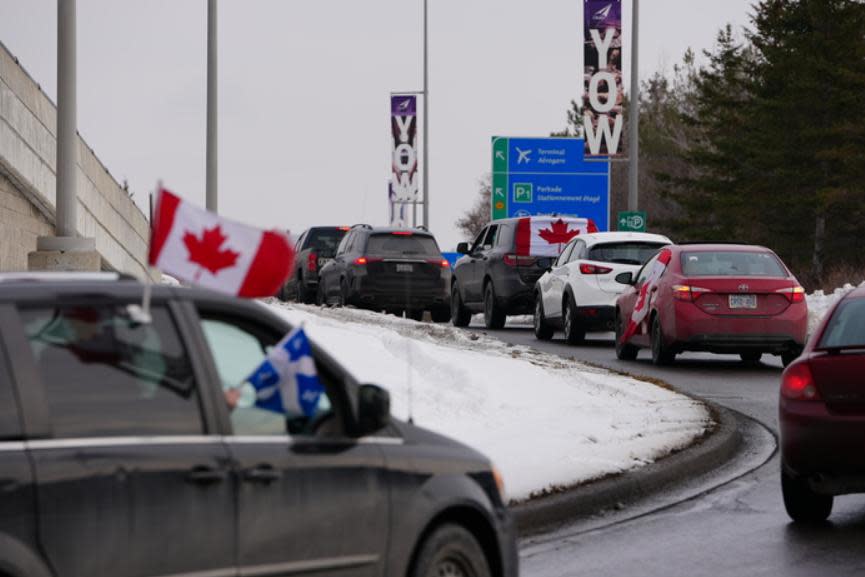
Drivers protesting Canada's COVID-19 rules circle the roads in front of the Ottawa airport terminal to slow traffic on Feb. 9, 2022. (Raphael Tremblay/CBC)
King told supporters to respect police
During proceedings on Wednesday, Calvinho said it was "all about context" in showing videos of Pat King helping clear emergency lanes, encouraging supporters to respect police officers and showing off a quiet downtown Ottawa.
Calvinho introduced videos of King and other protesters in a more positive light during the protests in January and February 2022.
In a video made on Feb. 16, 2022, King tells a group of protesters encircling police to "leave them alone" because they have a "job to do."
"Do not engage, come on, back off," he yells to a group, who comply and break out into chants of "freedom" and singing, "Oh Canada."
In the same video posted online, King tells the group assembled not to get agitated by police.
A video from Feb. 7 features King walking down Wellington Street near Parliament Hill showing off no horns being honked, telling his roughly 300,000 followers the protesters had given City of Ottawa officials and police an "olive branch."
"We stopped all the honking," he says.
The temporary injunction against honking was granted by a Superior Court of Justice the same day the video was made.
King encourages Prime Minister Justin Trudeau to meet with the protesters and not to be a "chicken."
"This was never about a vaccine," he said. "It was always about control."
Prosecutors are expected to close their submissions by the end of the week.
The officer who arrested King on Feb. 18 is expected to testify Friday.
King's defence is expected to begin submissions by calling Daniel Bulford, a former RCMP officer who was a key figure of the protests, as its first witness.

